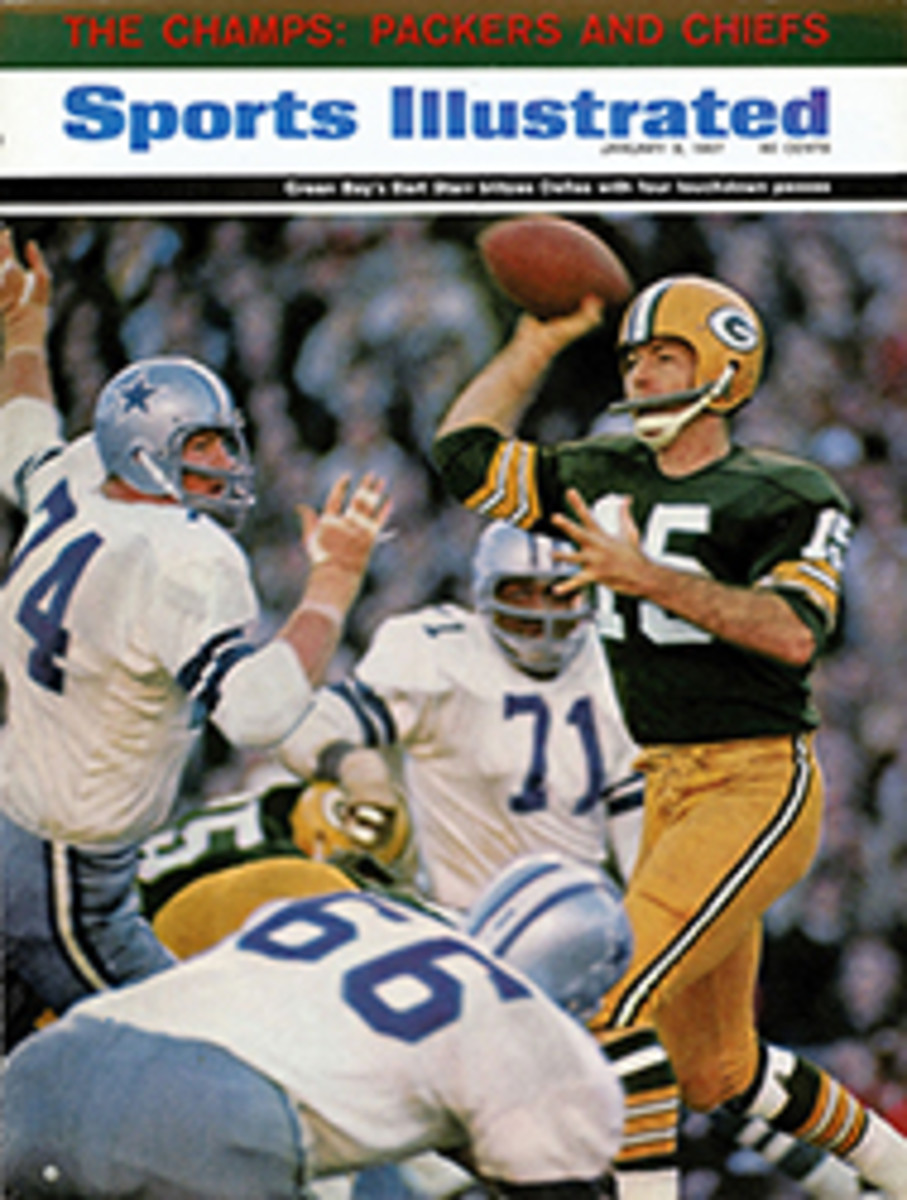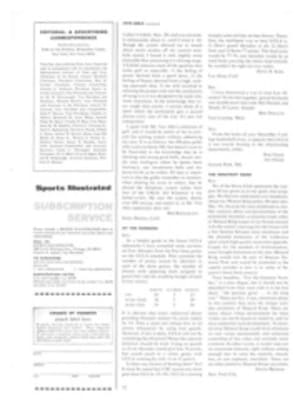
Australia wins an Indian war
There is one thing you can say about the 1966 Davis Cup Challenge Round, which was held in Melbourne, Australia last week: some of the names were interesting. Try Jaideep Mukerjea and Ramanathan Krishnan as starters. How about Rajkumar Khanna and Preemjit Lai? The trouble with the Challenge Round was that the other names were all too familiar—Roy Emerson and Fred Stolle, mainly—and those were the names that counted. No one really expected the Indians to put up much of a battle against the Australian machine and they didn't, losing 4-1.
There were still other familiar names at Kooyong Stadium last week, too. Remember Arthur Ashe, Cliff Richey and Charlie Pasarell? They were there, tennis rackets in their cases, watching the action from the uncomfortable grandstand seats to which they were relegated last October when Brazil scored a 3-2 upset in the Interzone semifinals. A fourth member of the U.S. team, Dennis Ralston, was in Los Angeles signing a $100,000 professional contract, thereby passing the buck, so to speak, after six years of anemic amateur success.
India earned the trip to Melbourne with a 3-2 victory over Brazil, which was undoubtedly still in shock as a result of its upset victory over the U.S. Playing it cool, the Indians declined to participate in any of the five Australian state tournaments that precede the Challenge Round, and, in fact, did not show up down under until one week before cup play was due to start. Still, the Indians had hope. Captain Rajkumar Khanna said, "We are not going to be overawed," and Aussie Captain Harry Hopman, reading from the cue cards, said, "These Indian boys are good."
The Australian press, though, was not about to be fooled. It gave slight notice to the Indian practice sessions. Rather, it chose to give Page One treatment to the wives of the three Indian team members, Mrs. Krishnan, Mrs. Mukerjea and Mrs. Lal, who made a big hit parading around Kooyong Stadium and Greater Melbourne in flowing Indian saris.
Likewise, the Lawn Tennis Association of Australia was not to be fooled. It astutely insured itself against financial loss by selling commercial sponsorship of the Challenge Round to a Melbourne oil company for 10,000 Australian dollars. Good move. Only 30,000 spectators showed up for the three days, and, at that, the 24,000 who stayed away got the better break. Ashe predicted a 5-0 Australian sweep, and Australian bookies, who were giving 10-to-l odds that India wouldn't win a match, found few takers.
The first day's singles matches pitted Fred Stolle, the U.S. champion and at the moment the world's best player, against Krishnan, and Roy Emerson, the two-time Wimbledon champion, against Mukerjea. Two hours and 20 minutes later the score was Australia 2, India 0. Stolle, serving violently and with great skill, put down Krishnan 6-3, 6-2, 6-4, and Emerson, playing his worst Challenge Round singles match ever, still overwhelmed Mukerjea 7-5, 6-4, 6-2.
All that did was provoke Sydney's leading sports commentator, Frank Bird, to suggest that Hopman lay aside his heavy artillery and let youngsters like Bill Bowery, Ray Ruffels and Owen Davidson get in on the bloodletting. "Why not make a contest of the 1966 Challenge," Bird said, "instead of asking us to watch the Indian amateurs being butchered in what will be an all-time low in the history of the Davis Cup defence."
Hopman was a bit lenient, but not much. Instead of playing Emerson and Stolle in the second-day doubles match, he chose John Newcombe and Tony Roche, who hadn't won a Wimbledon doubles title since way back in 1965.
Captain Khanna looked at the pairing, smiled enigmatically and said, "The world lives on hope. Why should we give up?"
Good question, and an even better one after Krishnan and Mukerjea had accomplished one of the great Davis Cup surprises by defeating Roche and Newcombe in four sets 4-6, 7-5, 6-4, 6-4.
"I told you the world lives on hope," Khanna said.
Hopman smiled and countered, "There is still tomorrow."
Right again, Harry. The third day was like throwing Krishnan to the lions. Emerson raised his game significantly in the humid 90° heat in the stadium, staved off a late rally by the desperate Indian and won the third and deciding point for Australia 6-0, 6-2, 10-8. In the last match, with nothing at stake, Stolle and Mukerjea met in the best match of the Challenge, with Stolle winning 7-5, 6-8, 6-3, 5-7, 6-3.
For the rest of the tennis world, the most encouraging news out of Australia all week was the rumor that Stolle would join Ralston in the pro ranks. Poor Australia. That would leave only Emerson, Roche, Newcombe, Davidson, Bowery and Ruffels to defend the 243-ounce sterling cup. And if Hopman really gets desperate, he might even be able to lure Margaret Smith, formerly the world's No. 1 woman player and an Australian, out of her recent retirement. Considering the state of tennis in the rest of the world, she just might be enough.
PHOTO
ONLY VICTORY FOR INDIANS WAS IN DOUBLES, IN WHICH MUKERJEA AND KRISHNAN (FAR COURT) OUTMANEUVERED AUSSIES

